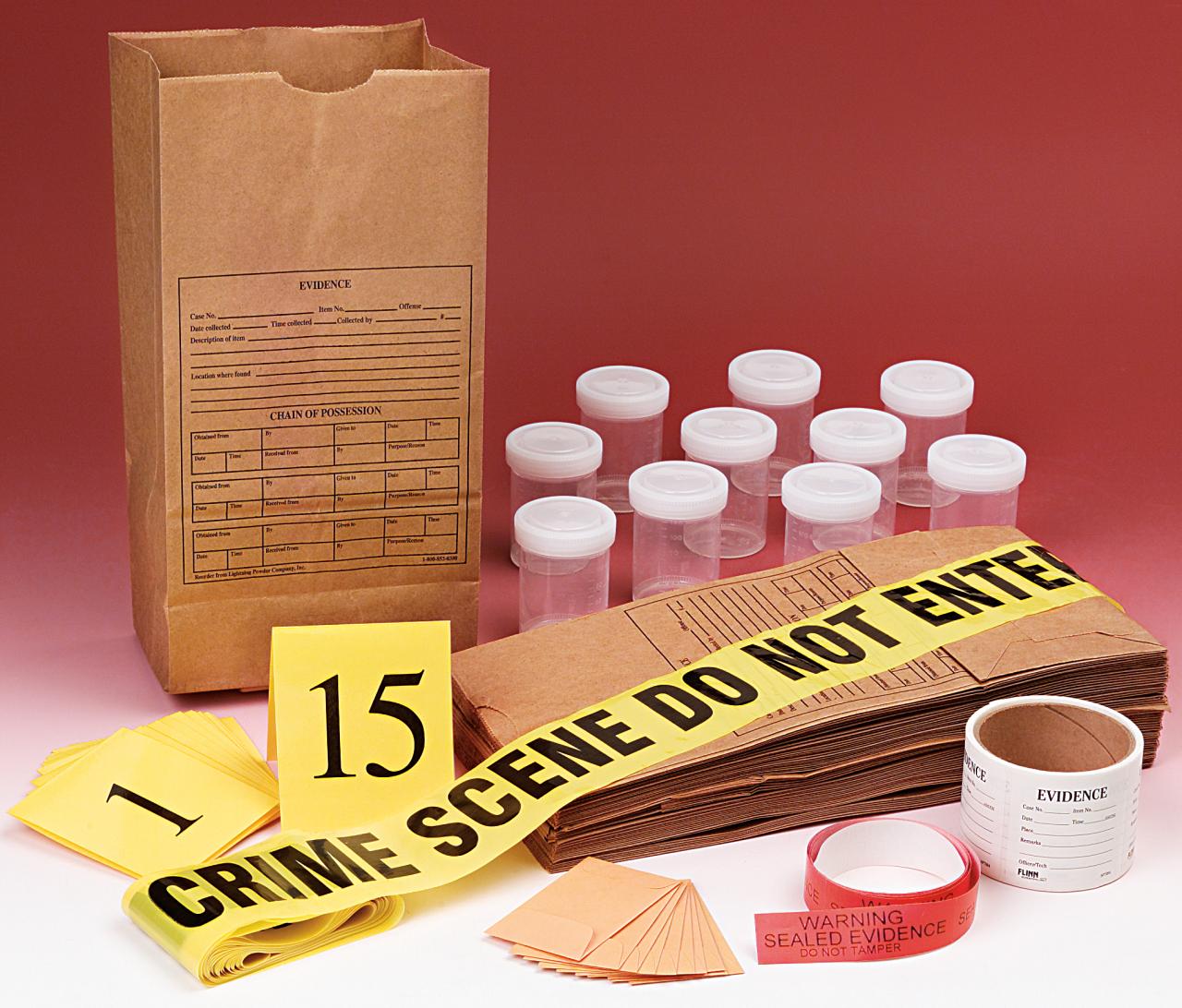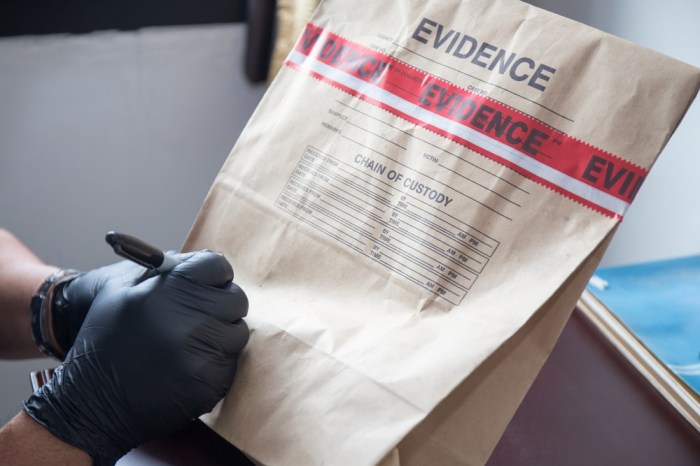An initial-response field kit does not contain evidence bags – Initial-response field kits are essential for first responders to collect and preserve evidence at crime scenes. However, surprisingly, these kits do not contain evidence bags. This article explores the reasons behind this exclusion and discusses alternative methods for evidence collection and storage.
Evidence bags are typically made of paper or plastic and are used to store and transport physical evidence. They come in various sizes and materials, each with specific advantages for different types of evidence.
Initial-Response Field Kits: Excluding Evidence Bags: An Initial-response Field Kit Does Not Contain Evidence Bags

Initial-response field kits are essential for law enforcement and emergency personnel to secure and preserve evidence at crime scenes. However, these kits often do not include evidence bags, posing challenges for evidence collection and storage.
Types of Evidence Bags and Their Purpose
| Bag Type | Size | Material | Intended Use |
|---|---|---|---|
| Paper Bags | Various | Kraft paper | Dry, non-porous items (e.g., clothing, documents) |
| Plastic Bags | Various | Polyethylene or polypropylene | Wet or moist items (e.g., blood, urine), small items |
| Vacuum Seal Bags | Various | Polyethylene with valve | Evidence preservation, preventing contamination |
| Evidence Envelopes | Standard sizes | Paper or plastic | Documents, small items, trace evidence |
Essential Contents of an Initial-Response Field Kit
- Gloves
- Mask
- Flashlight
- Camera
- Measuring tape
- Notebook and pen
- Evidence tags
- First-aid kit
Reasons for the Absence of Evidence Bags in Initial-Response Field Kits
- Limited space in field kits
- Logistical challenges in transporting evidence bags
- Concern over potential contamination
Alternative Methods for Evidence Collection and Storage, An initial-response field kit does not contain evidence bags
- Temporary storage in containers (e.g., cups, boxes)
- Use of vacuum cleaners for trace evidence collection
- Field photography and documentation
Best Practices for Evidence Collection and Preservation
- Wear appropriate protective gear
- Maintain the chain of custody
- Document the collection process
- Store evidence in a secure and controlled environment
Legal Implications of Improper Evidence Handling
- Compromised evidence integrity
- Potential for false convictions or acquittals
- Liability for mishandling or contamination
FAQ Section
Why are evidence bags not included in initial-response field kits?
Logistical challenges and space constraints prevent the inclusion of evidence bags in these kits.
What are the potential consequences of not having evidence bags readily available?
Mishandling or contamination of evidence, which can compromise its integrity and admissibility in court.
What alternative methods can be used to collect and store evidence?
Paper envelopes, plastic containers, and digital photography are some common alternatives.


